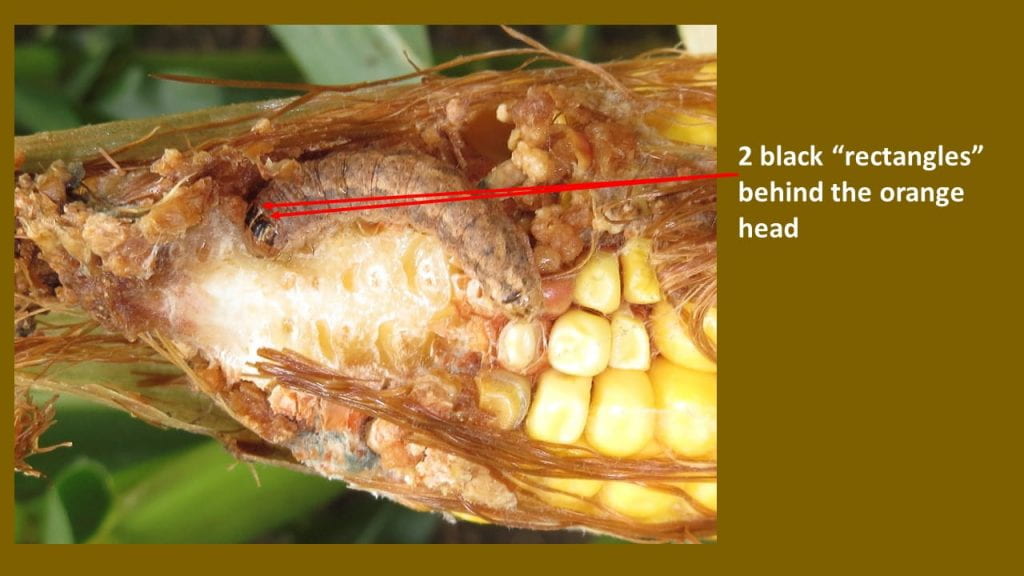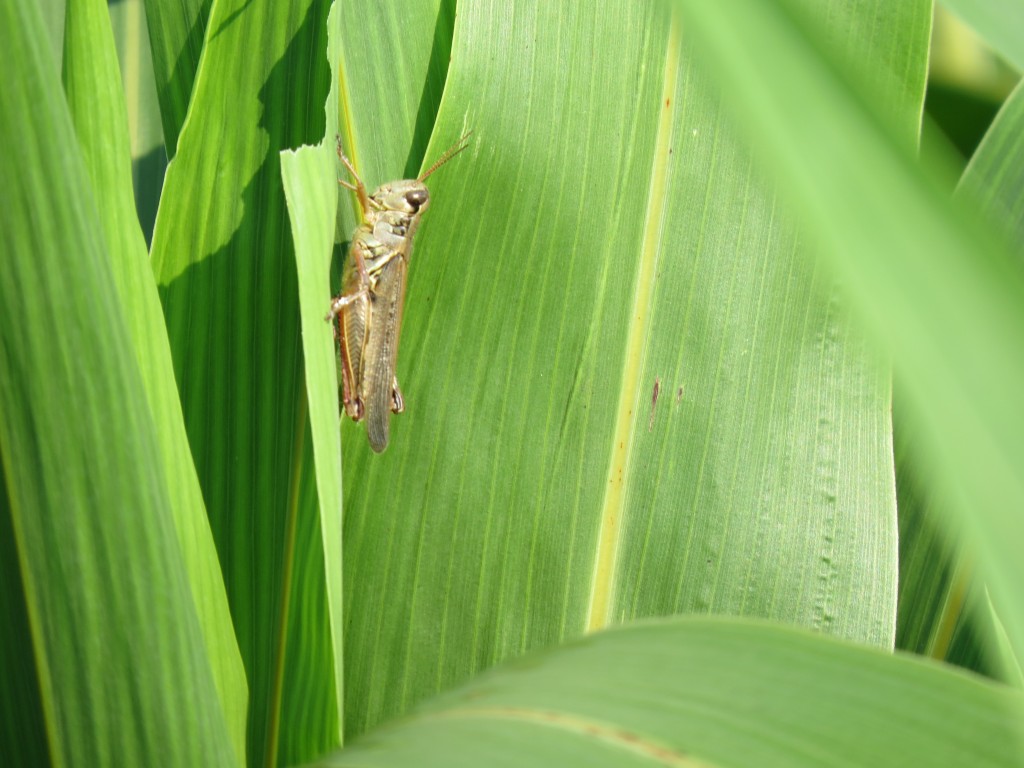Volume 19 Number 15
Contents
View From the Field
Western Bean Cutworm
We are past the peak flight of western bean cutworm moths in New York. This was the earliest peak flight we have recorded. We will still collect data for a few more weeks. Make sure to get out and scout your corn for small larvae. Once they enter the ear of corn, it is too late to control with insecticides, if the field might have been over threshold.

Western Bean Cutworm Moth Peak Fights by Year
Armyworm
This last week we had several reports of armyworm in sorghum-Sudan grass. In some cases the armyworm infestations did a lot of damage. A few growers have sprayed for them to avoid them moving into nearby cornfields. If the population is high with both large and small larvae, it might be economical to spray. If there are a lot of little white eggs attached to a large percentage of the larvae, then they have been parasitized. Natural biocontrol parasitoids will hatch from the eggs to feed on and kill the armyworm larvae.

Armyworm damage to surghum-Sudan Grass
Grasshoppers
There are reports of high levels of grasshoppers. Most grasshopper species prefer feeding on grasses, but will feed on corn and soybeans. For more information on grasshoppers in pasture and hay fields please refer to the following website: https://extensionpublications.unl.edu/assets/pdf/g1630.pdf
Corn and Soybean Diseases
It has been a relatively quiet year for diseases in both corn and soy. Gray leaf spot of corn is showing up in the typical regions, but not at alarming levels. Soybean foliar diseases, like Septoria brown spot, bacterial pustule and downy mildew are showing up at low levels in various counties, but haven’t been of much concern. There was one report of anthracnose in one soybean field in Oneida County last week. Keep an eye on your fields for later season diseases, and don’t forget to monitor for the soybean cyst nematode (SCN). We received funding from the NY Corn and Soybean Growers Association to support statewide testing for SCN, and every county has a number of eligible free tests. Contact your local extension specialist if you’re interested in getting a suspect field tested for SCN!
Clipboard Checklist
Keith Waldron, NYS IPM
General
*Walk fields to check general field condition, weed, vertebrate and other issues
*Watch for crop maturity, stand assessments, weed escapes, nutrient deficiencies, lodging issues
Alfalfa:
*Evaluate established legume stands for approximate days until harvest
*Monitor potato leafhopper, foliar, systemic and crown rot diseases.
*Monitor new seedings for potato leafhopper, pythium blight, phytopthora root rot.
Small Grains:
*Monitor grain fields for growth stage, disease and lodging issues, grain maturity, harvest timing
*Record diseases present, location and types of weed escapes
Corn:
*Monitor for mid-season corn pests including European corn borer, corn rootworm, western bean cutworm, slugs, foliar diseases such as northern corn leaf blight and gray leaf spot, weed issues, nutrient deficiencies, vertebrate damage.
Soybeans:
*Monitor for soybean aphid, defoliators, foliar diseases, white mold, weed issues, vertebrate damage
Pastures:
*Check water sources, mend fences as needed.
*Check crop growth, clip pastures between grazing as needed
*Monitor for invasive species, plants harmful to livestock
*Review/Plan rotations
Storage:
* Check stored grain bins for temperature, moisture and signs of mold and insects. Aerate, core, transfer grain or treat as necessary
* Clean and disinfect empty storage bins in preparation for grain harvest
*Check forage allocation and anticipate feed program adjustments as forages from previous year are used up
*Mow around storage bins and facility to minimize pest hiding places
Dairy Cattle Barn Fly Management:
*Monitor animals and barn area for house fly, stable fly and other pest management needs including presence of rodents and birds.
*Check facilities for favorable fly breeding conditions: (organic matter + moisture): leaks in watering systems, roof gutters for leaks and potential overspill, drainage,
*Sanitation, sanitation, sanitation – clean animal resting areas, feed troughs, minimize source of moist organic matter i.e. fly breeding areas in barn and in adjacent animal loafing yard
* Continue fly monitoring: install “3X5″ index card fly speck monitoring cards throughout barn
*Use, replenish, replace fly management materials: sticky fly tapes/ribbons, insecticide baits, natural enemies (parasitoids), fly population monitoring (3 x 5) spot cards
*Consider purchase and release of Muscidifurax raptor and/or M. raptorellus natural enemies of house and stable fly pupae.
Dairy Cattle on Pasture:
*Monitor animals for presence of face flies, horn flies and stable flies. Action guidelines: face flies (average 10 per animal face), horn flies (average 50 / dairy per animal side, 200 / beef cattle per animal side), stable flies average 10 per animal (all four legs)
*Check feed bunk / water source locations for signs of stable fly breeding (moist undisturbed organic matter – spilled feed, round bales, etc.), minimize source of moist organic matter i.e. fly breeding areas in barn and in adjacent animal exercise yard.
*Check pasture for forage quality / quantity, rotate as appropriate
*Check pasture for vegetation poisonous to livestock
*Consider use of pasture fly traps to help reduce deer, horse and stable fly populations



